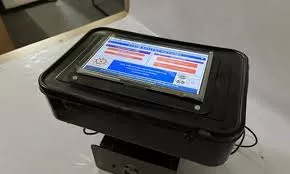ROURKELA – Researchers at the National Institute of Technology (NIT) Rourkela have achieved a significant breakthrough in food safety technology, developing a smart, Internet of Things (IoT) enabled device capable of monitoring food quality in real-time. This innovation promises to revolutionize how food safety is managed, from production to consumption.
The device, developed by a team of researchers from the Department of Electronics and Communication Engineering, utilizes a combination of advanced sensors and wireless communication technologies. It can detect various parameters indicative of food spoilage, including temperature, humidity, pH levels, and the presence of harmful gases. The data collected by these sensors is then transmitted wirelessly to a cloud-based platform, allowing for continuous monitoring and analysis.
“Our aim was to create a robust and user-friendly system that could provide accurate and timely information about food quality,” explained a lead researcher involved in the project. “This device can be deployed across the food supply chain, from farms and processing plants to storage facilities and retail outlets, ensuring that food remains safe for consumption.”
The real-time monitoring capabilities of the device offer several advantages. For instance, it allows for early detection of spoilage, minimizing food waste and reducing the risk of foodborne illnesses. Furthermore, the data collected can be used to optimize storage and transportation conditions, extending the shelf life of perishable goods.
The researchers believe that this technology has the potential to significantly impact the food industry, particularly in regions where food spoilage is a major concern. The device’s affordability and ease of deployment make it accessible to a wide range of stakeholders, including small-scale farmers and food vendors.
The team is now working on further refining the device and exploring its potential applications in other areas, such as pharmaceutical and environmental monitoring. They also aim to enhance the device’s artificial intelligence capabilities, enabling it to predict spoilage and provide proactive alerts.
This development marks a significant step forward in leveraging IoT technology for food safety, offering a promising solution to the global challenge of ensuring access to safe and nutritious food.
Disclaimer: While the information presented in this article is based on publicly available sources, including the Deccan Herald report, the accuracy and reliability of the technology described are subject to ongoing research and development. Readers should consult with relevant experts and official sources for the most up-to-date and accurate information. The technology’s effectiveness and commercial availability are subject to further testing, regulatory approvals, and market conditions.












